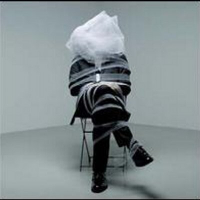Edward Colston/Trans rights/Stamp collecting
Comments
-
Again, what do you think should change given that you don't know how/why the jury found them not guilty? Vague notions of things not feeling right is not really something that can go into a new CDA.TheBigBean said:
Not at all. They have just brought it to the public's attention. This is the way laws change. They exist, sometimes for a while, there is an event which some people don't like then the laws change.rjsterry said:
It always was possible. You'd have to ask the guy whether the Colston case influenced his actions. The idea that this is something new is just wrong. In 50 years of criminal damage convictions, you are suggesting that no-one has ever successfully used the 'lawful excuse' defence until now?TheBigBean said:Laws change all the time. The Colston case doesn't set a legal precedent, but it sets an example that it is possible to damage something and not face punishment. Would the guy who was having a go at the BBC statue have done so prior to the Colston case?
1985 Mercian King of Mercia - work in progress (Hah! Who am I kidding?)
Pinnacle Monzonite
Part of the anti-growth coalition0 -
 https://youtu.be/S1pW6r9kjiw
https://youtu.be/S1pW6r9kjiw
Mind boggling stuff...0 -
No more Red Dwarf on Sky Gold I guess?Ben6899 said:Stevo_666 said:
That's getting a bit silly now. Wonder what classic car enthusiasts who own MG Midgets are going to do to avoid offending anyone?DeVlaeminck said:
I sold mine. Saw this coming..."I spent most of my money on birds, booze and fast cars: the rest of it I just squandered." [George Best]0 -
finally!! some good newsStevo_666 said:
No more Red Dwarf on Sky Gold I guess?Ben6899 said:Stevo_666 said:
That's getting a bit silly now. Wonder what classic car enthusiasts who own MG Midgets are going to do to avoid offending anyone?DeVlaeminck said:
I sold mine. Saw this coming...0 -
whoever set that up was trying to get Piers Morgan sackedmrb123 said: https://youtu.be/S1pW6r9kjiw
https://youtu.be/S1pW6r9kjiw
Mind boggling stuff...0 -
rjsterry said:
Again, what do you think should change given that you don't know how/why the jury found them not guilty? Vague notions of things not feeling right is not really something that can go into a new CDA.TheBigBean said:
Not at all. They have just brought it to the public's attention. This is the way laws change. They exist, sometimes for a while, there is an event which some people don't like then the laws change.rjsterry said:
It always was possible. You'd have to ask the guy whether the Colston case influenced his actions. The idea that this is something new is just wrong. In 50 years of criminal damage convictions, you are suggesting that no-one has ever successfully used the 'lawful excuse' defence until now?TheBigBean said:Laws change all the time. The Colston case doesn't set a legal precedent, but it sets an example that it is possible to damage something and not face punishment. Would the guy who was having a go at the BBC statue have done so prior to the Colston case?
The CDA 1971 has served us well for 50 years and there is no need for modification.
Pretty straight forward.
A person who without lawful excuse destroys or damages any property belonging to another, intending to destroy or damage any such property, or being reckless as to whether any such property would be destroyed or damaged, shall be guilty of an offence.
It even allows for a lawful excuse, legislated for in section 5 of the Act.
Here is a guide to the elements of the offence needed to be proved and what they mean. It even gives examples of ‘lawful excuse’
https://www.cps.gov.uk/legal-guidance/criminal-damage
In the case of the Colston 4, the elements of the offence seem to have been proved and yet the jury returned a not guilty verdict even though there appeared no grounds to meet the ‘lawful excuse’. We will never know why they returned such a verdict, as jurors must not discuss the case outside the jury room.
Not the first time and won’t be the last that a jury has refused to convict although the elements of the offence have been proved. It’s called jury nullification.
Those that think this a good thing should think long and hard about the principle, as it doesn’t just apply to case to which you may be sympathetic.
A famous example would be the trial of the 2 men accused of murdering Emmett Till in Mississippi.
2 white men found not guilty of murder of a black man within an hour. Both men later admitted their guilt.
Jury nullification. We really don’t want to be going down this road.
0 -
I don't think we have a choice without overhauling the entire jury system. That option has been available to juries for far longer than the CDA. Changing the law on the basis of a single case sounds like an equally bad idea.ballysmate said:rjsterry said:
Again, what do you think should change given that you don't know how/why the jury found them not guilty? Vague notions of things not feeling right is not really something that can go into a new CDA.TheBigBean said:
Not at all. They have just brought it to the public's attention. This is the way laws change. They exist, sometimes for a while, there is an event which some people don't like then the laws change.rjsterry said:
It always was possible. You'd have to ask the guy whether the Colston case influenced his actions. The idea that this is something new is just wrong. In 50 years of criminal damage convictions, you are suggesting that no-one has ever successfully used the 'lawful excuse' defence until now?TheBigBean said:Laws change all the time. The Colston case doesn't set a legal precedent, but it sets an example that it is possible to damage something and not face punishment. Would the guy who was having a go at the BBC statue have done so prior to the Colston case?
The CDA 1971 has served us well for 50 years and there is no need for modification.
Pretty straight forward.
A person who without lawful excuse destroys or damages any property belonging to another, intending to destroy or damage any such property, or being reckless as to whether any such property would be destroyed or damaged, shall be guilty of an offence.
It even allows for a lawful excuse, legislated for in section 5 of the Act.
Here is a guide to the elements of the offence needed to be proved and what they mean. It even gives examples of ‘lawful excuse’
https://www.cps.gov.uk/legal-guidance/criminal-damage
In the case of the Colston 4, the elements of the offence seem to have been proved and yet the jury returned a not guilty verdict even though there appeared no grounds to meet the ‘lawful excuse’. We will never know why they returned such a verdict, as jurors must not discuss the case outside the jury room.
Not the first time and won’t be the last that a jury has refused to convict although the elements of the offence have been proved. It’s called jury nullification.
Those that think this a good thing should think long and hard about the principle, as it doesn’t just apply to case to which you may be sympathetic.
A famous example would be the trial of the 2 men accused of murdering Emmett Till in Mississippi.
2 white men found not guilty of murder of a black man within an hour. Both men later admitted their guilt.
Jury nullification. We really don’t want to be going down this road.
Otherwise I think we agree on most of that but jury nullification is only a possible explanation of what happened. IIRC, each of the four put forward different defences, and it may be that the jury felt that the prosecution hadn't fully proved their case, so we really don't know one way or the other.
As for sympathy for the defendants, I don't feel particularly strongly either way about them. I don't think statues need special protection. Putting them up and knocking them down is something we have been doing for thousands of years.1985 Mercian King of Mercia - work in progress (Hah! Who am I kidding?)
Pinnacle Monzonite
Part of the anti-growth coalition0 -
The Act is specific in what amounts to lawful excuse and none of the 4 seem to have met the criteria. The only reason left why the jury failed to return a guilty verdict is because they didn't want to. This is entirely within their gift and they are not obliged to explain their reasons. In fact, they are barred from discussing it.0
-
The commentary I have seen stated that the examples were not an exhaustive list, but otherwise we agree.ballysmate said:The Act is specific in what amounts to lawful excuse and none of the 4 seem to have met the criteria. The only reason left why the jury failed to return a guilty verdict is because they didn't want to. This is entirely within their gift and they are not obliged to explain their reasons. In fact, they are barred from discussing it.
1985 Mercian King of Mercia - work in progress (Hah! Who am I kidding?)
Pinnacle Monzonite
Part of the anti-growth coalition0 -
Sect 5 (2) where the lawful excuse is imparted, doesn't give examples, it sets criteria which any excuse needs to meet.
You have a choice. A or B
A person charged with an offence to which this section applies, shall, whether or not he would be treated for the purposes of this Act as having a lawful excuse apart from this subsection, be treated for those purposes as having a lawful excuse—
(a)if at the time of the act or acts alleged to constitute the offence he believed that the person or persons whom he believed to be entitled to consent to the destruction of or damage to the property in question had so consented, or would have so consented to it if he or they had known of the destruction or damage and its circumstances; or
(b)if he destroyed or damaged or threatened to destroy or damage the property in question or, in the case of a charge of an offence under section 3 above, intended to use or cause or permit the use of something to destroy or damage it, in order to protect property belonging to himself or another or a right or interest in property which was or which he believed to be vested in himself or another, and at the time of the act or acts alleged to constitute the offence he believed—
(i)that the property, right or interest was in immediate need of protection; and
(ii)that the means of protection adopted or proposed to be adopted were or would be reasonable having regard to all the circumstances.0 -
ballysmate - you should read the Secret Barrister post on the subject. He identifies a few ways in which the jury could have found the defendants not guilty.0
-
link?TheBigBean said:ballysmate - you should read the Secret Barrister post on the subject. He identifies a few ways in which the jury could have found the defendants not guilty.
0 -
Further up this threadballysmate said:
link?TheBigBean said:ballysmate - you should read the Secret Barrister post on the subject. He identifies a few ways in which the jury could have found the defendants not guilty.
0 -
Sect 3 CLA usually applies to force against the person, but I can see how it can be stretched to be used as force against an object. In all matters relating to sect3 it comes down to "reasonable". If you think the presence of a statue is a crime, is climbing up, fixing ropes and then once it is pulled over, tossing it into the river, reasonable? Covering it up would perhaps be a more reasonable action. That is, IF a crime was being committed.
The alleged offence was Sect 5 Public order offence. The MAX penalty if found guilty would be £1000 so is the action taken in this case "reasonable" ? A blanket over the head would have prevented the "crime" would it not?
The defence also stated that the statue was owned by the people of Bristol and they would have given their consent. (Crim Dan Sect 5 defence). This being the case are we to assume that if there was an offence under Sect 5 Public Order Act, it would be the people of Bristol and not the council who would have to pay the relevant fine? Thought not.
Para 5 of the Secretbarrister's piece is the only one that seems reasonable as an explanation to me.
if the jury were satisfied that the prosecution had made them sure of guilt, they would also need to be sure that a criminal conviction for criminal damage would be proportionate.
It seems to me that the jury decided that it would not be proportionate and they chose not to convict because they simply didn't want to.
Which is virtually the definition of jury nullification.0 -
Again, you seem to be jumping from explanations that seem reasonable to you, to 'that's what the jury must have decided. Maybe but it's possible they did think the defences reasonable. Either way, it's a feature of our system rather than a bug, and I don't think it warrants a change of law and I'm not even sure what you would change.1985 Mercian King of Mercia - work in progress (Hah! Who am I kidding?)
Pinnacle Monzonite
Part of the anti-growth coalition0 -
If you look back, I was actually arguing that NO change in the law was needed. Others appeared to think change was required.rjsterry said:Again, you seem to be jumping from explanations that seem reasonable to you, to 'that's what the jury must have decided. Maybe but it's possible they did think the defences reasonable. Either way, it's a feature of our system rather than a bug, and I don't think it warrants a change of law and I'm not even sure what you would change.
The various 'defences' discussed by the secret barrister are somewhat contradictory.
It was argued that the statue was the property of the people of Bristol and its presence amounted to a Sect 5 Public offence. ie the people of Bristol were committing that offence. (Statues cannot be guilty of an offence) It was also argued that the same people would have consented to the statue being destroyed.
One claim would seem to negate another would it not? That's before it is decided whether a public order offence actually had been committed.
On the subject of "reasonable", if you saw a car with the most offensive bumper sticker on it, to which you rightly took offence, what would you consider a reasonable course of action?
Report the driver to the police? Take steps to cover the offending sticker? Or tie a rope to the car and wrench the rear bumper off?
But I agree that "reasonable" is a subjective view.0 -
I assume in this case it was considered reasonable as requests for it to be removed had been ignored.0
-
A public statue in a public place is not the same as a sticker on a private car for multiple reasons, so I think it is a false analogy.ballysmate said:
If you look back, I was actually arguing that NO change in the law was needed. Others appeared to think change was required.rjsterry said:Again, you seem to be jumping from explanations that seem reasonable to you, to 'that's what the jury must have decided. Maybe but it's possible they did think the defences reasonable. Either way, it's a feature of our system rather than a bug, and I don't think it warrants a change of law and I'm not even sure what you would change.
The various 'defences' discussed by the secret barrister are somewhat contradictory.
It was argued that the statue was the property of the people of Bristol and its presence amounted to a Sect 5 Public offence. ie the people of Bristol were committing that offence. (Statues cannot be guilty of an offence) It was also argued that the same people would have consented to the statue being destroyed.
One claim would seem to negate another would it not? That's before it is decided whether a public order offence actually had been committed.
On the subject of "reasonable", if you saw a car with the most offensive bumper sticker on it, to which you rightly took offence, what would you consider a reasonable course of action?
Report the driver to the police? Take steps to cover the offending sticker? Or tie a rope to the car and wrench the rear bumper off?
But I agree that "reasonable" is a subjective view.0 -
I don't think the law makes a distinction.rick_chasey said:
A public statue in a public place is not the same as a sticker on a private car for multiple reasons, so I think it is a false analogy.ballysmate said:
If you look back, I was actually arguing that NO change in the law was needed. Others appeared to think change was required.rjsterry said:Again, you seem to be jumping from explanations that seem reasonable to you, to 'that's what the jury must have decided. Maybe but it's possible they did think the defences reasonable. Either way, it's a feature of our system rather than a bug, and I don't think it warrants a change of law and I'm not even sure what you would change.
The various 'defences' discussed by the secret barrister are somewhat contradictory.
It was argued that the statue was the property of the people of Bristol and its presence amounted to a Sect 5 Public offence. ie the people of Bristol were committing that offence. (Statues cannot be guilty of an offence) It was also argued that the same people would have consented to the statue being destroyed.
One claim would seem to negate another would it not? That's before it is decided whether a public order offence actually had been committed.
On the subject of "reasonable", if you saw a car with the most offensive bumper sticker on it, to which you rightly took offence, what would you consider a reasonable course of action?
Report the driver to the police? Take steps to cover the offending sticker? Or tie a rope to the car and wrench the rear bumper off?
But I agree that "reasonable" is a subjective view.0 -
I think there was a case like this in Belfast, but I can't find the details. Short version, a pro-life demo had their 'stand' damaged by pro-choice activists who took exception to the display of graphic images of aborted foetuses.
“New York has the haircuts, London has the trousers, but Belfast has the reason!0 -
What was the outcome?tailwindhome said:I think there was a case like this in Belfast, but I can't find the details. Short version, a pro-life demo had their 'stand' damaged by pro-choice activists who took exception to the display of graphic images of aborted foetuses.
0 -
TheBigBean said:
What was the outcometailwindhome said:I think there was a case like this in Belfast, but I can't find the details. Short version, a pro-life demo had their 'stand' damaged by pro-choice activists who took exception to the display of graphic images of aborted foetuses.
Can't remember
“New York has the haircuts, London has the trousers, but Belfast has the reason!0 -
I agree some of those defences seem a bit of a stretch, but I wasn't at the court and didn't hear the evidence.ballysmate said:
If you look back, I was actually arguing that NO change in the law was needed. Others appeared to think change was required.rjsterry said:Again, you seem to be jumping from explanations that seem reasonable to you, to 'that's what the jury must have decided. Maybe but it's possible they did think the defences reasonable. Either way, it's a feature of our system rather than a bug, and I don't think it warrants a change of law and I'm not even sure what you would change.
The various 'defences' discussed by the secret barrister are somewhat contradictory.
It was argued that the statue was the property of the people of Bristol and its presence amounted to a Sect 5 Public offence. ie the people of Bristol were committing that offence. (Statues cannot be guilty of an offence) It was also argued that the same people would have consented to the statue being destroyed.
One claim would seem to negate another would it not? That's before it is decided whether a public order offence actually had been committed.
On the subject of "reasonable", if you saw a car with the most offensive bumper sticker on it, to which you rightly took offence, what would you consider a reasonable course of action?
Report the driver to the police? Take steps to cover the offending sticker? Or tie a rope to the car and wrench the rear bumper off?
But I agree that "reasonable" is a subjective view.1985 Mercian King of Mercia - work in progress (Hah! Who am I kidding?)
Pinnacle Monzonite
Part of the anti-growth coalition0 -
I'm still struggling how a jury can realistically be expected to make a judgement on what they think the defendant may have believed (especially having to do so not based on their own emotions). It seems a very vague thing to out into law0
-
There are simple examples where it makes sense. For example, if someone points a gun at your head, you punch them when they look away, they die from the punch/fall and it is later discovered that the gun was a fake and that you weren't in any danger. You would be quite keen for the jury to give a view on what you believed to be the case the time and not the actual circumstances.Pross said:I'm still struggling how a jury can realistically be expected to make a judgement on what they think the defendant may have believed (especially having to do so not based on their own emotions). It seems a very vague thing to out into law
That said I'm less keen in this sort of circumstance.0 -
I think you are looking at it the wrong way round. The question is not whether the defendant can convince the jury that they really did believe they had a lawful excuse, but whether the prosecution can convince the jury that they did not.1985 Mercian King of Mercia - work in progress (Hah! Who am I kidding?)
Pinnacle Monzonite
Part of the anti-growth coalition0 -
The judgement did. All judgments take context into account and this is no exception.TheBigBean said:
I don't think the law makes a distinction.rick_chasey said:
A public statue in a public place is not the same as a sticker on a private car for multiple reasons, so I think it is a false analogy.ballysmate said:
If you look back, I was actually arguing that NO change in the law was needed. Others appeared to think change was required.rjsterry said:Again, you seem to be jumping from explanations that seem reasonable to you, to 'that's what the jury must have decided. Maybe but it's possible they did think the defences reasonable. Either way, it's a feature of our system rather than a bug, and I don't think it warrants a change of law and I'm not even sure what you would change.
The various 'defences' discussed by the secret barrister are somewhat contradictory.
It was argued that the statue was the property of the people of Bristol and its presence amounted to a Sect 5 Public offence. ie the people of Bristol were committing that offence. (Statues cannot be guilty of an offence) It was also argued that the same people would have consented to the statue being destroyed.
One claim would seem to negate another would it not? That's before it is decided whether a public order offence actually had been committed.
On the subject of "reasonable", if you saw a car with the most offensive bumper sticker on it, to which you rightly took offence, what would you consider a reasonable course of action?
Report the driver to the police? Take steps to cover the offending sticker? Or tie a rope to the car and wrench the rear bumper off?
But I agree that "reasonable" is a subjective view.
The analogy is false as it excludes material context.
There is an awful lot of discretion in law to take context into account.0 -
The judgement was by a jury. It was not guitly. No one knows anything more.rick_chasey said:
The judgement did. All judgments take context into account and this is no exception.TheBigBean said:
I don't think the law makes a distinction.rick_chasey said:
A public statue in a public place is not the same as a sticker on a private car for multiple reasons, so I think it is a false analogy.ballysmate said:
If you look back, I was actually arguing that NO change in the law was needed. Others appeared to think change was required.rjsterry said:Again, you seem to be jumping from explanations that seem reasonable to you, to 'that's what the jury must have decided. Maybe but it's possible they did think the defences reasonable. Either way, it's a feature of our system rather than a bug, and I don't think it warrants a change of law and I'm not even sure what you would change.
The various 'defences' discussed by the secret barrister are somewhat contradictory.
It was argued that the statue was the property of the people of Bristol and its presence amounted to a Sect 5 Public offence. ie the people of Bristol were committing that offence. (Statues cannot be guilty of an offence) It was also argued that the same people would have consented to the statue being destroyed.
One claim would seem to negate another would it not? That's before it is decided whether a public order offence actually had been committed.
On the subject of "reasonable", if you saw a car with the most offensive bumper sticker on it, to which you rightly took offence, what would you consider a reasonable course of action?
Report the driver to the police? Take steps to cover the offending sticker? Or tie a rope to the car and wrench the rear bumper off?
But I agree that "reasonable" is a subjective view.
The analogy is false as it excludes material context.
There is an awful lot of discretion in law to take context into account.0 -
Exactly the same. Offensive item in a public place. Ownership is immaterial.rick_chasey said:
A public statue in a public place is not the same as a sticker on a private car for multiple reasons, so I think it is a false analogy.ballysmate said:
If you look back, I was actually arguing that NO change in the law was needed. Others appeared to think change was required.rjsterry said:Again, you seem to be jumping from explanations that seem reasonable to you, to 'that's what the jury must have decided. Maybe but it's possible they did think the defences reasonable. Either way, it's a feature of our system rather than a bug, and I don't think it warrants a change of law and I'm not even sure what you would change.
The various 'defences' discussed by the secret barrister are somewhat contradictory.
It was argued that the statue was the property of the people of Bristol and its presence amounted to a Sect 5 Public offence. ie the people of Bristol were committing that offence. (Statues cannot be guilty of an offence) It was also argued that the same people would have consented to the statue being destroyed.
One claim would seem to negate another would it not? That's before it is decided whether a public order offence actually had been committed.
On the subject of "reasonable", if you saw a car with the most offensive bumper sticker on it, to which you rightly took offence, what would you consider a reasonable course of action?
Report the driver to the police? Take steps to cover the offending sticker? Or tie a rope to the car and wrench the rear bumper off?
But I agree that "reasonable" is a subjective view.
Besides, was it not part of the defence that said statue was owned by the people of Bristol, which would make it private property.
FWIW I think the notion that the statue was owned by the people of Bristol and not the local authority utter bollox.
1








